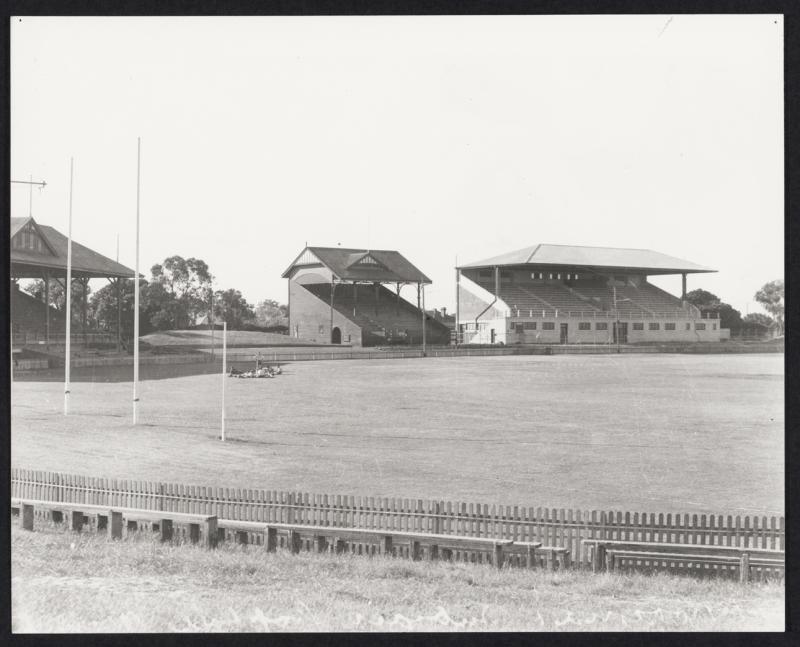Originally named Mueller Park, Subiaco Oval was established in 1908. Previously known locally as the ‘sand patch’, the site was used as a sporting ground from the 1890’s.
The grounds saw many changes throughout its history. The first grandstand, a jarrah timber structure with a capacity of 550 people, was completed in 1909. The second grandstand was a larger structure built in 1923 to accommodate a further 1500 spectators.
Subiaco Oval was home of the Subiaco Football Club for 96 years, from 1908 to 2004. Subiaco Football Club was formed in 1896, winning its first premiership at Subiaco Oval in 1912 and playing its final home game in 2003.
As well as football, Subiaco Oval was used as a playing ground for other sports including lacrosse, tennis, boxing, cricket and rugby, and later in its lifetime was also used as a venue for other large-scale events such as concerts.
In 1935, new entrance gates and turnstiles were constructed on the corner of Roberts Road and the north end of Townshend Road (now Haydn Bunton Drive) in commemoration of the Jubilee of King George V. The gates still stand today and are the oldest remaining structure of Subiaco Oval.
Increased attendance at the Oval saw further development. Tiered grandstands were constructed from the 1960s to 2000, eventually encircling the entire oval. With a final capacity of 43,500, Subiaco Oval became the highest-capacity stadium in Western Australia.
Subiaco Oval hosted its final event in November 2017, and was demolished in 2019. Following the Oval’s demolition, the site was redeveloped, with the playing field retained at its original dimensions and the historic entrance gates restored. The Oval was reopened for public use in 2020.
